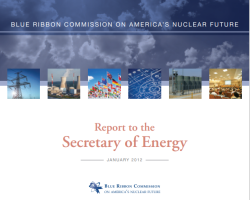One Step at a Time: The Staged Development of Geologic Repositories for High-Level Radioactive Waste - Summary
One Step at a Time: The Staged Development of Geologic Repositories for High-Level Radioactive Waste - Summary
A new report from the National Academies proposes a management approach called “adaptive staging” as a promising means to develop geologic repositories for high-level waste such as the proposed repository at Yucca Mountain, Nevada. Adaptive staging is a learn-as-you-go process that enables project managers to continuously reevaluate and adjust the program in response to new knowledge and stakeholder input.


